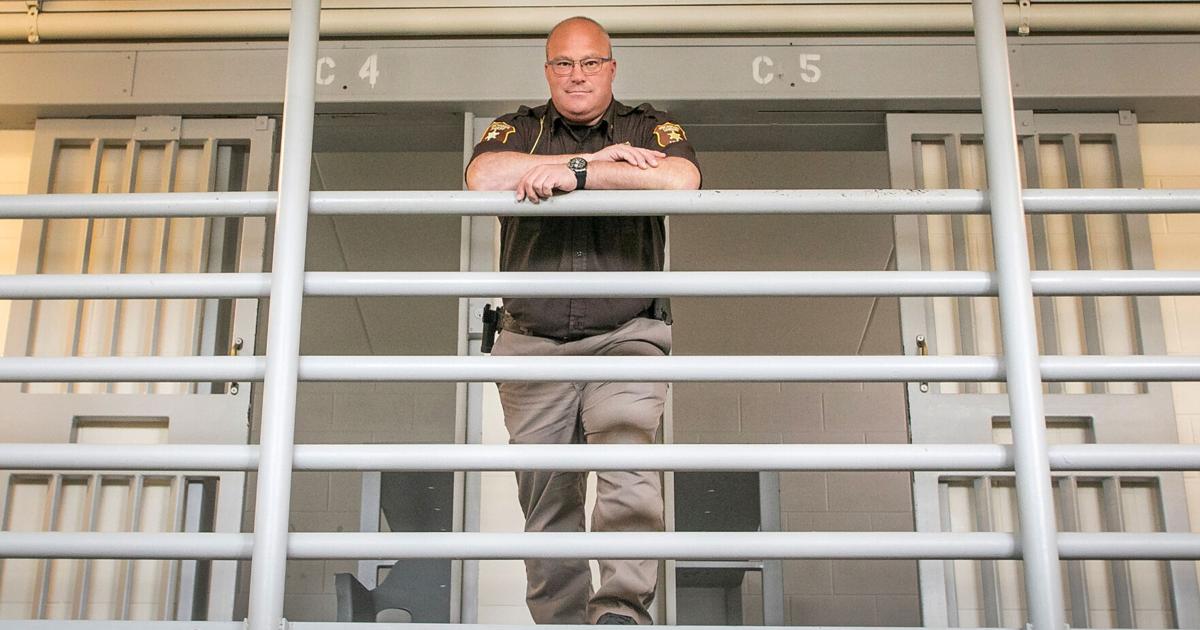Outsourcing inmates: Kalkaska one of six empty jails in Michigan | Local News

KALKASKA — Once filled with the cacophony of inmates, corrections officers and clanging cell doors, the Kalkaska County Jail is an eerily quiet place these days.
Other than serving as a temporary lockup for a disheveled woman who was asleep on the floor of a holding cell last week, the 62-bed facility, which was built in 1976, sat empty. The woman, who was arrested for malicious destruction of property, was transported to the Wexford County Jail in Cadillac the following day.
Unable to hire enough corrections officers to staff his jail and seeing his inmate population dwindle to as few as 10 prisoners during the COVID-19 pandemic when the county’s court system all but ground to a halt, Sheriff Pat Whiteford reluctantly decided at the beginning of 2022 to close the facility and begin sending most of his inmates to Wexford County, 40 miles away.
Since then, Whiteford also occasionally has shipped prisoners to Crawford, Leelanau, Antrim, Iosco, Ogemaw and Lake counties.
“It was a real tough decision to say, ‘All right, we’re no longer going to house them,’ “ said Whiteford, who has been sheriff since 2015. “I didn’t know what kind of impact that would have … and then there’s obviously just that stigma that that’s one of my statutory obligations is operating the jail as sheriff.
“In a perfect world, we would have been able to stay within our court district, but Wexford’s been great to work with and it’s right down (U.S. Route) 131,” he added.
Currently, Wexford County, which built a new 158-bed jail in 2017, houses a roster of inmates from Kalkaska County that fluctuates with an average daily population between 27 and 35, Whiteford said.
In exchange, Kalkaska County pays Wexford County $35 a day per inmate, which covers room, board and an occasional emergency medical transport. In 2023, Kalkaska County spent a total of $350,290 to house its prisoners in Wexford and other counties.
Kalkaska is one of just six of Michigan’s 83 counties that no longer operates its own jail. The other counties, and the counties to which they send their prisoners, are Keweenaw (to Baraga) and Luce (to Alger) in the Upper Peninsula, and Oscoda (to Ogemaw), Montmorency (to Alpena) and Alcona (to Iosco) in the northern Lower Peninsula, according to Matt Saxton, executive director of the Michigan Sheriffs’ Association.
Saxton said that although Michigan law says county sheriffs are responsible for the operation of their jails, the law does not require the counties to operate their own jails. Counties, however, are required by law to cover necessary expenses, such as medical care or treatment, for their inmates.
Referring to the six counties that have closed their jails, Saxton said: “Traditionally, they’ve had low daily populations so it makes financial sense for another county to house them.”
‘Nobody to hire’
Whiteford said he knew he was in trouble in early 2022 when he spent $6,000 to send four recruits to a corrections officer training academy in Petoskey, after which all of them left for better-paying jobs in other fields that were not related to law enforcement.
At the time, he said, Kalkaska County was paying its corrections officers $20.43 an hour. County Commissioner David Comai said it became obvious that the county would have difficulty hiring and retaining COs even if commissioners agreed to a salary increase.
“There was nobody to hire,” he said. “We couldn’t get the people, even if we could have offered $5 an hour more.”
The CO shortage isn’t unique to Kalkaska County, Saxton said.
“Hiring has been a problem, not just for corrections but for law enforcement as well, but we’re starting to see that change,” he said. “In talking with sheriffs around the state, they’re starting to equalize a little bit.
“The difficulty with a jail is you have to have a certain number (of COs) working there. If you’re short-staffed, you have to work overtime to make sure the jail is staffed. Sometimes there’s a burnout issue with that.”
In addition, jail and prison populations statewide have decreased significantly because of the suspension of court operations during the pandemic and as a result of landmark jail reforms that were adopted by Michigan lawmakers in 2021.
Responding to findings by a jail reform task force that Michigan’s incarceration rate had tripled even as the crime rate dipped to a 50-year low, legislators gave law enforcement the discretion to issue citations to people charged with non-violent misdemeanor offenses, instead of arresting them and locking them up.
Kyle Kaminski, spokesman for the Michigan Department of Corrections, said those factors have led to a significant reduction in the state’s prison population as well. According to a report sent to the Michigan Legislature last month, Michigan’s year-end prison population in 2023 was 32,986, 36 percent below the state’s record high population of 51,554 prisoners in March 2007.
“We do expect to see an increase of 700 to 800 prisoners over the next 24 to 36 months,” Kaminski said.
A modest savings
Whiteford calculates that, factoring in the cost of hiring four jailers and feeding his inmates, the county is saving $30,000 to $35,000 a year by sending most of his prisoners to Wexford County. He and Comai agree that the cost differential is modest enough that they would prefer to house the county’s prisoners in Whiteford’s jail if they could hire enough COs to staff it. That would avoid the hassle of sending deputies or COs to Wexford County to deliver and pick up inmates for medical appointments and court appearances that can’t be held via a video-conferencing system like Zoom or Polycom, Whiteford said.
The $350,000 a year that Kalkaska County spends to outsource its inmate population is comparable to the spending amount of other counties with closed jails.
Oscoda County Sheriff Kevin Grace said his county is paying Ogemaw County $32 a day per prisoner. Currently, he said, the Ogemaw County Jail houses 19 Oscoda County inmates. He said his county, the least populous county in the Lower Peninsula, paid Ogemaw County $288,000 in 2023 to lodge and feed his inmates.
Alpena County Sheriff Erik Smith, who houses prisoners from Montmorency County, said Montmorency pays his county a flat fee of $250,000 a year to take up to 15 inmates. If Montmorency sends him fewer than 15 prisoners, it still pays the same fee, he said. Currently, he said, his new jail, which opened in June 2021, holds 49 prisoners, eight of whom are from Montmorency County.
“We house them and we feed them,” Smith said. If a prisoner from Montmorency has a scheduled medical appointment, a deputy from that county drives to Alpena to transport the prisoner. “If it’s an emergency, we take them,” he said.
As for Kalkaska County, Whiteford said the commissioners have permitted him to continue to employ six COs, who he assigns to do foot patrols and assist the courts when they’re not doing prisoner transports and dealing with inmates who are temporarily in holding cells.
“The board of commissioners has been very supportive of maintaining enough staff to make this happen and give me the personnel to do the transports and not pull from the road,” he said. “I would feel we’re doing an injustice to the public if I’m pulling road staff all the time to run down inmates to Wexford County.”



